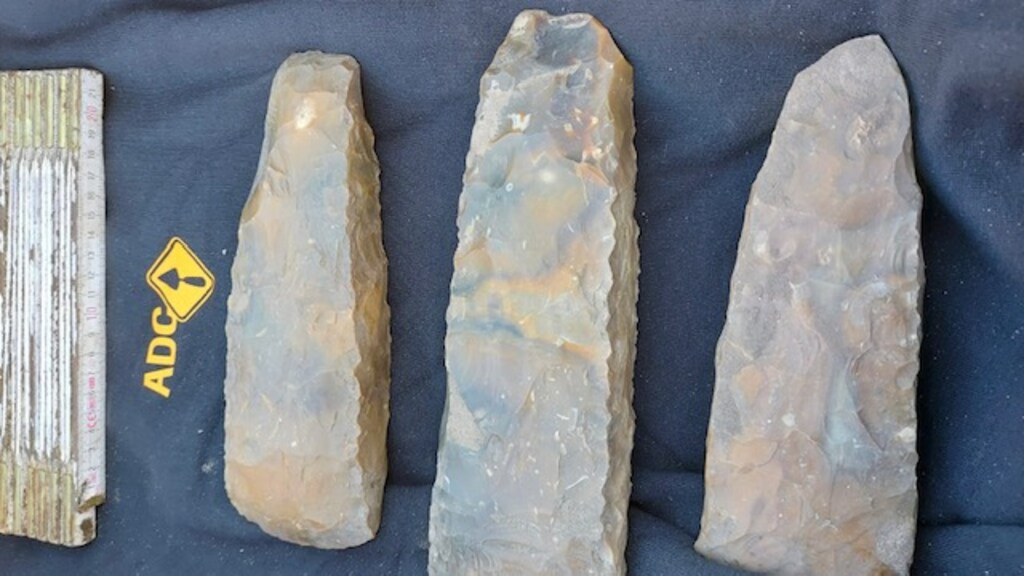Palinurus
The Living Force
Source (in Dutch): Archeologen vinden unieke bijlen in Collendoorn: 'Collega's werden gek'
Other coverage:
Unique flint axes found in excavations - Then24
Unieke vuurstenen bijlen gevonden bij opgravingen in Collendoorn
Historical excavation
Archaeologists find unique axes in Collendoorn: 'Colleagues went crazy'
1 hour 14 minutes ago - Updated: 20 seconds ago

Niels Bouma's fellow archaeologists with the unearthed axes
A group of archaeologists made a very special excavation in Collendoorn, Overijssel: three flint axes about five thousand years old. Such a large find, which also carries a lot of information, happens only rarely. "We were really overjoyed and all our colleagues went crazy."
The ancient axes date roughly from 3400 to 2750 BC. "That is also called the funnel beaker period," says Niels Bouma, project manager of the excavation. Recognizable for that time are, for example, the dolmens from Drenthe. "All we know is that it was then that the first people settled as farmers in the northern Netherlands. Other than that, pretty little is known about that period."
In the Netherlands we know of only eight finds of this type of axe. Those were all excavated in the late 19th, early 20th century. "But we don't even know where they were found. We do know that now, along with the specific context and all the other data. That makes the excavation so unique," Bouma tells EditieNL.

The flint axes of about five thousand years old
So it's anything but an everyday find for the archaeologists. "We went all out. We'd already be happy with one, but it's actually three." After the photos of the axes were shared in the group app with colleagues, the messages poured in. "We sent a picture of the first one and a little later the second and third. They went crazy."
Unused
The archaeologists made the find at a site where new houses will be built in the spring. No other traces of, for example, a grave, dwelling or residential yard were found there. "That's why we think the axes were left there deliberately," Bouma tells EditieNL.
Another reason to think so is that the flints were not sharpened and appear unused. Whereas normally they should be sharp for cutting down trees or building houses. "Also, the axes are of large size and good quality. That's why they can't come from the Netherlands. We think from northern Germany or southern Scandinavia."
Research
Why the axes were then left here is hard to determine. "It could be anything. We are now thinking mainly in the direction of ceremonies or rituals." These were performed, for example, for a good harvest.
To learn more about the prehistoric axes, they will first be examined for other traces of use. After that, it's up to the municipality what will happen to them. "They can be used for exhibitions, for example," Bouma says.
Translated with www.DeepL.com/Translator (free version)
Other coverage:
Unique flint axes found in excavations - Then24
Unieke vuurstenen bijlen gevonden bij opgravingen in Collendoorn
